Fatty Liver Causes: Alcoholic (AFLD) and Nonalcoholic (NAFLD) In-Depth
The first thing you need to know about fatty liver causes is that there are TWO overall types of fatty liver:
- Nonalcoholic fatty liver disease (NAFLD): surprisingly common in western countries today and obviously the causes are non-alcoholic – read about the 8 different causes and risk factors
- Alcoholic fatty liver disease (AFLD): caused by too high a consumption of alcohol
Further down in this article we will go into great depth about the different causes, both nonalcoholic and alcoholic, but first let’s just take a look at how a fatty liver condition is typically discovered.
Typical Scenario: “I Have a Fatty Liver? Really! I Had no Idea!”
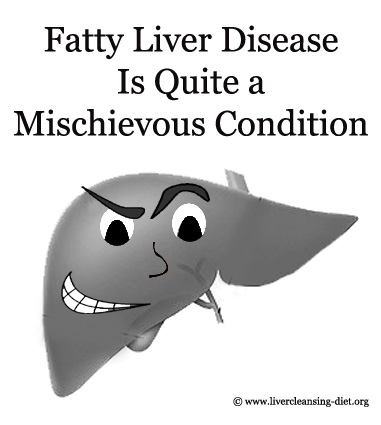 A fatty liver is quite a mischievous condition. Why? Well because most often you can’t ‘feel’ or ‘sense’ that you have a fatty liver. Most cases occur with no symptoms.
A fatty liver is quite a mischievous condition. Why? Well because most often you can’t ‘feel’ or ‘sense’ that you have a fatty liver. Most cases occur with no symptoms.
Therefore many people get quite an unpleasant surprise when their blood test (often taken to test something completely different) tells them that they have too much fat tissue in their liver.
Typically, this is how a fatty liver is ‘discovered’:
Okay, Do I Have a Fatty Liver? The Fatty Liver Discovery Process
1) 1st Step: A Blood Test to Check Your Liver Enzymes
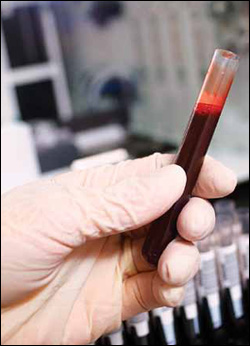 As already mentioned the first step in discovering a fatty liver, is most often via a routine blood test at the doctor’s. In some cases your doctor can actually feel that your liver slightly enlarged.
As already mentioned the first step in discovering a fatty liver, is most often via a routine blood test at the doctor’s. In some cases your doctor can actually feel that your liver slightly enlarged.
(However, some people do experience symptoms such as fatigue and a sense of physical unpleasantness. Some also feel a sense of subtle heaviness in the right side of their upper body just under their ribs.)
If you have some degree of a fatty liver, your blood test will reveal increased liver enzymes. A discovery of increased liver enzymes, however, is only enough to suspect, not conclude that you have a fatty liver.
Therefore to be sure, more testing needs to be done.
2nd Step: A Scan to Check Your Fat Tissue
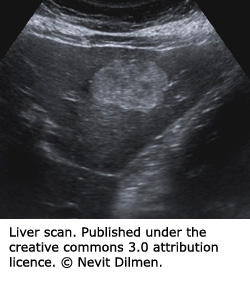 Please note that the diagnosing process differ from doctor to doctor, health system to health system and country to country.
Please note that the diagnosing process differ from doctor to doctor, health system to health system and country to country.
However, if elevated liver enzymes have been discovered, the next step is often an ultrasound. An ultrasound may show too high a presence of fat tissue around your liver. However, as is the case with the blood test, an ultrasound is not failproof.
There is one more test step to take, if you want a 100 % indisputable diagnosis or if your doctor suspects a more serious condition than ‘just’ a fatty liver.
3rd Step: A Liver Biopsy to Check Fat Presence in Your Liver
A liver biopsy is done at a hospital, typically by a surgeon, where a needle will be carefully going though your skin and further into your liver in order to retrieve a liver tissue sample.
Yes, a liver biopsy sounds really quite unpleasant, but may be necessary if you want to be absolutely sure of whether you do or don’t have a fatty liver.
A liver biopsy will show for definite if you have too much fatty tissue in your liver. However, if your doctor estimates that your condition isn’t too serious, a blood test and scan might be enough.
If your doctor is in doubt of whether your liver tissue might be inflamed or scarred (cirrhosis), a biopsy might be required.
Nonalcoholic or Alcoholic Fatty Liver? Which One Is It?
 A liver biopsy cannot determine whether your fatty liver stems from too much alcohol or something else.
A liver biopsy cannot determine whether your fatty liver stems from too much alcohol or something else.
In order to determine the fatty liver causes, your doctor will ask you questions related to your lifestyle.
And obviously one the first questions asked will be whether you drink (too much) or not. A good rule of thumb is:
- Less than two drinks a day: Nonalcoholic fatty liver
- More than two drinks a day: Alcoholic fatty liver
8 Nonalcoholic Causes of Fatty Liver (Risk Factors)
– Fatty Liver Is Very Common and Due to a MIX of Causes
First of all, nonalcoholic fatty liver disease (NAFLD) is a lot more common than you think.
An American study has shown that NAFLD is the most common chronic liver disease around. In this study a stunning 46% of ALL middle-aged people were suffering from this disease. Yes, that is almost half!
There is no single reason or cause as to why so many suffer from this disease. Most often is a mix of different causes.
For instance if you are middle-aged, a man, overweight with cholesterol and triglyceride problems and suffer from diabetes, your risk of developing fatty liver disease is really quite high.
NAFLD (Fatty Liver) Is the Result of a ‘Chain Reaction’
Like with so many other conditions, fatty liver is typically a result of a chain reaction – it starts one place and ends up another place.
As regards the cause of fatty liver, one of the most popular scientific theories today, is insulin resistance. And insulin resistance is a very, very common condition in the western world which may have many complications such as overweight and type 2 diabetes, which again increase the risk of fatty liver.
Got NAFLD? You Need to ACT!
If you’ve discovered that you have a fatty liver, you need to act and most often the condition can be improved via weight loss and diet.
If you do nothing, the relative harmless condition of having a fatty liver might progress to something a lot more serious, such as steatohepatitis (NASH) or even worse, cirrhosis, in which case much of your liver tissue has turned into inflexible damaged scar tissue which hinders normal blood flow into the liver and thus reduces your liver function and performance.
So don’t wait, act now!
Overweight – Too Much Body Fat: NAFLD Cause / Risk #1
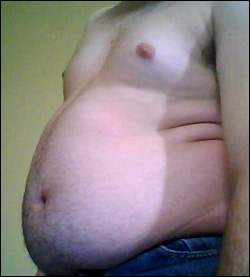 As we all know many Americans suffer from overweight today and being overweight or obese is directly linked to having a fatty liver.
As we all know many Americans suffer from overweight today and being overweight or obese is directly linked to having a fatty liver.
A study has shown that about 29 million Americans have NAFLD.
And unfortunately this condition is not just reserved for adults, many overweight children are starting to suffer from fatty liver too.
Here Is What Happens Inside Your Body: From Food to Fat
When you eat carbohydrates, your body’ cells need insulin in order to convert the carbs into energy.
If you are insulin resistant (which many people actually are without knowing it), it means that your cells can’t absorb the glucose (energy) that they need. However, not surprisingly your cells do need energy, so your body goes into state of alert and produces more insulin hoping that this will help your cells absorb more of the energy from the food you eat.
There is just one problem: while you are producing more insulin, your level of glucose goes up as well. And your body doesn’t like it, when your glucose level is too high.
So what does your body do, to get it down again?
Well, your body stores the glucose as FAT. Fat in your body … and fat in your liver.
Too High LDL Cholesterol and Triglyceride Levels: NAFLD Cause / Risk #2
Fatty substances in your blood are necessary for your body to function properly, however, too high levels of them can be a problem.
Here is some important background info:
The fat in your blood can be divided into two main categories: cholesterol and triglycerides.
Among other things, cholesterol is important for your cell walls. There are two types of cholesterol: LDL and HDL. Obviously things are more complicated than this, but simply put, there is the ‘good’ cholesterol (HDL) and the ‘bad’ cholesterol (LDL). So you want to high levels of HDL and low levels of LDL.
Triglycerides have several functions: they serve as an energy source and store energy which sound quite innocent. But they also help you keep warm in winter as the fat in your body consist of triglycerides. So you can view triglycerides as bodily isolation.
Then it doesn’t take a rocket scientist to deduce that too high a level of triglycerides may lead to accumulation of fat in the liver cells, too = fatty liver.
So if you have a low level of HDL cholesterol and high levels of LDL cholesterol and triglycerides you are stepping into the danger zone of fatty liver development.
Type 2 Diabetes: NAFLD Cause / Risk #3
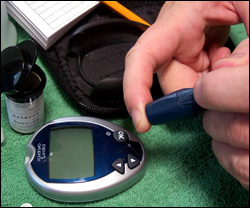 There is a very clear connection between type 2 diabetes and nonalcoholic fatty liver. If you suffer from type 2 diabetes fatty liver is a great risk. 35-74% of people with this condition also have a fatty liver. And this is not all, if you are obese with diabetes – you WILL most certainly have a fatty liver.
There is a very clear connection between type 2 diabetes and nonalcoholic fatty liver. If you suffer from type 2 diabetes fatty liver is a great risk. 35-74% of people with this condition also have a fatty liver. And this is not all, if you are obese with diabetes – you WILL most certainly have a fatty liver.
If you’ve read about the causes of fatty above – about insulin, cholesterol and triglycerides, understanding the next section is just pure logic.
People with type 2 diabetes suffer from many of the conditions mentioned above: insulin resistance, too high a level of triglycerides and LDL cholesterol. And too low a level of HDL cholesterol.
This basically means is that there are too many fatty substances freely floating around in your blood which your body then desperately tries to store as fat wherever it can. One place is in your liver. More here
Losing Weight too FAST: NAFLD Cause / Risk #4
When you have a fatty liver, losing weight is normally a good thing. However, the weight loss needs to be gradual and at a healthy pace – a few pounds a week tops.
For instance if you’ve had fat removed surgically, your body will find itself in a state of crisis. To minutes ago it had lots of fat, now it doesn’t. So what does your clever body do? Well it starts to produce more fatty substances and fatty acids to make up for the loss.
In this way it may lead to a fatty liver or possibly worsen the already exiting NAFLD condition.
Age: NAFLD Cause / Risk #5
If you are going into your second stage of youth (beyond 50), the risk of nonalcoholic fatty liver goes up a notch.
Sex: NAFLD Cause / Risk #6
It’s a bit unfair, but apparently NAFLD is more common in men than in women.
Genetics: NAFLD Cause / Risk #7
Like with many other things, you can be predisposed to a fatty liver. Certain autoimmune or liver diseases may increase your risk of developing fatty liver.
Also the condition of insulin resistance is very often hereditary.
Medication: NAFLD Cause / Risk #8
Certain types of medication e.g. tamoxifen and methotrexat may increase the risk of fatty liver disease. Fortunately it is rare.
Alcoholic Fatty Liver Disease (AFLD)
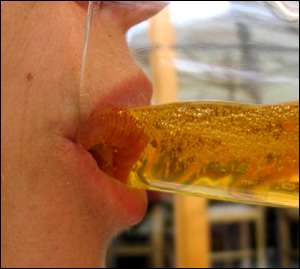 As most of you probably know, the liver is a very important part of your digestive system.
As most of you probably know, the liver is a very important part of your digestive system.
When you drink alcohol about 80-90% of the alcohol gets broken down in your liver.
The liver and, to a lesser extent, the gastrointestinal tract, are the main sites of alcohol metabolism.
However, besides overloading your liver in itself, alcohol messes up your body’s natural fat combustion. Alcohol damages the structures of your cells and fatty like beads or globules start to develop in your liver which again may cause your liver to swell.
Alcohol is also responsible for an elevated production of triglycerides (a form of fat) floating around in your blood. These triglycerides will be stored in your liver as fat.
The condition of alcoholic fatty liver disease is relatively easy to cure – you just need to stop your alcohol consumption.
Fatty Liver Isn’t Dangerous in Itself – BUT May Lead to More Serious Conditions
As mentioned earlier, most people with a fatty liver aren’t experiencing any symptoms. But if the condition continues it may lead to steatohepatitis (inflammation of the liver) or cirrhosis (scarring of the liver).
Also with a fatty liver your risk of stroke or heart attack is increased.
What Would You Like to Read Now?
Keys to a Liver Detox Diet and Healthy Liver Diet
Healthy Liver Supplements: Your Detailed Guide to a Natural Liver Cleanse Diet
Guide to a Healthy Liver Diet: Make Your Own Liver Cleansing Diet
Lots of Healthy Liver Diet Tips and Free Liver Diet Examples
In-Depth Liver Cleanse Recipe Information: The Best Natural Liver Cleansing Tips for Liver Flushing and Detox
Your Guide to a Powerful Liver Cleanse Diet: Choose the Right Kinds of Fiber, Protein, Vegetables, Fruits and Fats in Your Healthy Liver Diet
The Effective Liver Diet: Step by Step Guidelines to a Natural Liver Detox Diet
The Research-Based Liver Flush Guide: Beyond the Myths of Radical Detox Methods
The Wonder of the Milk Thistle Liver Supplement for a Natural Liver Detox
Where is Your Liver Located, What is the Function of the Liver, and Other Liver Information
Symptoms of Liver Problems – How to Know if You Need a Natural Liver Detox
Taking a Liver Function Test – Catching Symptoms of Liver Problems Early On
Fatty Liver Diet Supplements, Herbs and Foods along with Insights into the Causes of Fatty Liver
Fatty Liver Disease in Depth: Typical Signs and Symptoms, Alcoholic and Non-Alcoholic Causes and Dietary & Medicine Treatments
Go to the top of this article about Fatty Liver Causes: Alcoholic (AFLD) and Nonalcoholic (NAFLD) In-Depth
Go to the homepage Liver Cleansing Diet
